How to Create an ERC20 Token in 7 Steps – A Comprehensive Guide
28 October 2024Listen to the Audio :
Have you ever thought about how to create your own cryptocurrency? As blockchain technology continues to grow more people are looking into how to create digital assets. The ERC token which works on the Ethereum system & is one of the most popular types of cryptocurrency. ERC tokens are the building blocks of many decentralized finance (DeFi) apps. You can use them to power a new project or create your own digital currency.
What is an ERC20 token and how do you build one? If you follow this ERC20 token development guide, we will show you how to create ERC20 token step by step. This article will assist you in grasping the basic concepts of token creation, its applications and the advantages of creating your own ERC20 token regardless of whether you are an architect, business owner or just interested in cryptocurrencies.
In this blog-we will also discuss the key characteristics of ERC20 tokens and their importance for the decentralized future and how to implement them on the Ethereum network. We cover everything you need to start in the world of cryptocurrencies from token minting to security issues. Are you wondering about it. Now lets get started.
ERC20 Token - What is it?
The Ethereum Request for Comment or ERC20 is a cryptocurrency token that simplifies the process of creating and managing digital assets. It operates on the ethereum blockchain. It is a collection of rules or protocols that guarantee all tokens created using the ERC20 token standard may function flawlessly with Ethereum wallets, exchanges and decentralized applications.
Multiple applications can extensively utilize ERC20 tokens such as cryptocurrencies, decentralized finance, tokenized assets and initial coin offerings. Smart contracts can be programmed and controlled which ensures the safety, transparency and automation of key processes like token trades, ownership and total supply management.
Required Tools for Creating ERC20 Token
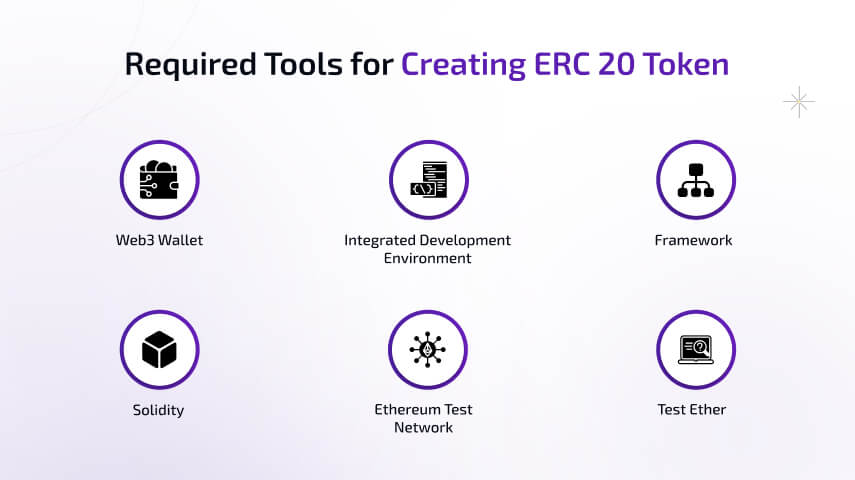
You will need tools and resources to create an ERC20 token. The list below is
1. Web3 Wallet
You must have a web3 wallet to manage your Ethereum account and interact with the blockchain. It makes it easier to carry out transactions and implement contracts by enabling you to safely store Ethereum and ERC20 tokens. You may effortlessly connect to decentralized apps and handle numerous Ethereum addresses by using a web3 wallet.
Purpose - Store and maintain Ethereum accounts and sign transactions & implement smart contracts.
Example - Metamask.
2. Integrated Development Environment (IDE)
Smart contract development & testing and debugging require an Integrated development environment. It simplifies the development process with capabilities like real time compilation and syntax highlighting. You may quickly and easily create your ERC20 token code and test it in an intuitive environment by using an IDE.
Purpose - Create, assess and debug smart contracts.
Example - Remix IDE
3. Framework
A Hardhat simplifies the testing, development and deployment of Ethereum smart contracts. It comes with the tools for automation and debugging as well as a local Ethereum network for testing. Managing the ERC20 token development is made simpler with Hardhat which streamlines the entire process.
Purpose - Effectively create, test and implement smart contracts.
Example - Hardhat
4. Solidity
In solidity, the programming language that the Ethereum blockchain uses to create smart contracts. It allows programmers to specify token rules and actions including balance control and transfer processes. Knowledge of Solidity is essential to developing a safe and useful ERC20 token.
Purpose - Write ERC20 token smart contract code.
Example - Solidity programming language.
5. Ethereum Test Network
To deploy and test your ERC20 token without using actual ETH—you must have a test network. You may conduct tests and debug it before deploying it on the main network because it resembles the Ethereum mainnet.
Purpose - Test smart contracts before activating them.
Example - Kovan, Goerli and Ropsten.
6. Test Ether
To pay for gas expenses and create ERC20 token on a test network—you will need to test Ether (ETH). On test networks–you can use faucets to obtain free Ethereum also known as test ether. This enables you to create contracts and carry out transactions without using real funds.
Purpose - Obtain ETH to conduct transactions on test networks.
Example - Ropsten Faucet.
Create and Deploy Your ERC20 Token on the Ethereum Blockchain?
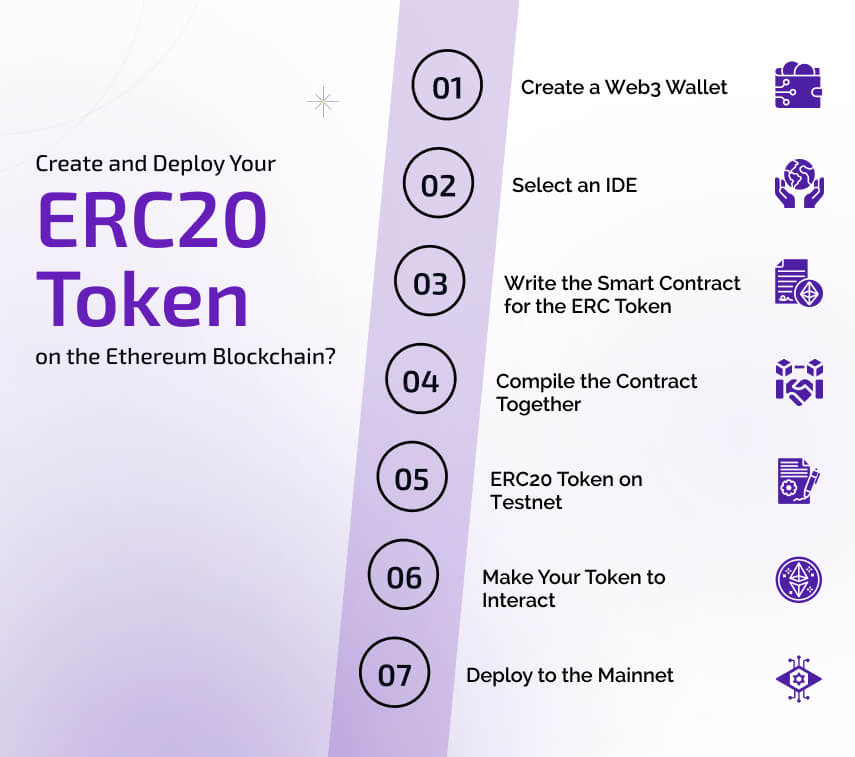
Step 1- Create a Web3 Wallet
First you will need a web3 wallet such as Metamask to communicate with the Ethereum blockchain.
Install the Metamask browser extension.
If you are deploying on a test network such as Ropsten or Goerli, create an ethereum account and pay with ETH for gas expenses (or use testnet ETH).
Step 2 - Select an IDE ( Development Environment)
Use an IDE Remix, a web-based platform made specifically for Solidity to build and deploy your smart contract.
Step 3 - Write the Smart Contract for the ERC Token
You can write a simple solidity ERC20 token contract in Remix
Step 4 - Compile the Contract Together
In Remix, select the Solidity compiler
Check the contract’s compilation for errors
Step 5 - ERC20 Token on Testnet
In Metamask—switch to a test network (such as Goerli or Ropsten)
In Remix choose the ‘Injected Web3’ environment to deploy your contract
In Metamask—confirm the transaction
Step 6 - Make Your Token to Interact
You will receive a contract address after deployment
You can use the contract address to add the token to your network
Move tokens around Metamask accounts
Step 7 - Deploy to the Mainnet
After testing on a test network—transfer Metamask to the Ethereum Mainnet and deploy the contract using the same procedure
Ensure the wallet includes enough ETH to cover gas costs.
Time to Create ERC20 Token
You might be able to create an ERC20 token on the Ethereum blockchain in a few hours which depends on how skilled you are and what tools you use. The first thing you need to do to set up your coding environment is to install a cryptocurrency wallet like Metamask and an integrated development environment (IDE) like Remix. It usually takes ten to twenty minutes to complete this first setup. After setting up your environment, you will write the smart contract which outlines the details of your token such as its name, symbol, total supply and features like approval and transfer processes. This stage can take as little as fifteen minutes if you are using a conventional template.
However, if you are not experienced with solidity programming, it may take longer to customize the contract to match unique requirements. After creating the contract and compiling it, you must deploy it into the Ethereum blockchain, typically a quick process. The deployment process could take ten to thirty minutes depending on gas fees and the current state of network congestion.
Ultimately you may engage with your token once it becomes live enabling people to exchange tokens and use them in other decentralized applications. Creating your ERC20 token can be a quick and profitable undertaking with the right planning and resources.
Why is ERC20 so Expensive?
There are several reasons why creating and transferring ERC20 tokens is highly expensive. The following explains why ERC20 tokens may be viewed as pricey:
1. Ethereum Gas Fees
Gas Fees
Gas is needed for transactions on the Ethereum network and ETH is used to pay for it. The gas fees can vary greatly based on demand and network congestion.
High Demand
During the phases of high demand such as market turbulence or the launch of prominent decentralized apps, gas fees can rise making transactions pricey.
2. Smart Contract Complexity
Deployment Expenses
To deploy a smart contract, gas expenses must be paid. Contracts with more intricate logic or many functions require more gas which is the cost of deployment.
Execution Costs
Gas fees are incurred when interacting with smart contracts such as when transferring tokens, which can add up for complex operations.
3. Market Speculation
Token Value
Speculation frequently drives the value of newly issued ERC20 tokens. If the market believes a token to be valuable, it may fetch a higher price, adding to the perception of cost.
Price Volatility
The cryptocurrency market is infamous for its extreme volatility which has the potential to raise prices due to theory, hype or FOMO (Fear of missing out).
4. Security and Audits
Audit Cost
Engaging in a professional audit to guarantee the security of your ERC20 token may result in additional expenses. Security audits are essential for defending against weaknesses particularly when it comes to financial activities.
Development Costs
Hiring developers to build and audit the token can increase overall costs if custom functionality is required.
5. User Requests for Features
Enhanced features
A token’s deployment and transaction costs may increase if it has advanced features like minting, burning or governance systems.
Integration with Dapps
Decentralized finance applications (Defi) use a large number of ERC20 tokens and dealing with these platforms might be expensive.
6. Network Upgrades and Scalability Issues
Ethereum 1.0 Limitations
Transactions throughput is limited on the existing Ethereum network which causes congestion. Still we need to adopt and implement Ethereum 2.0 to enhance scalability and reduce costs.
Layer 2 Solutions
While some layer 2 solutions aim to reduce costs by managing transactions off the main Ethereum chain, their acceptance may not be universal potentially leading to increased mainnet fees.
How Much Does it Cost You to Create ERC20 Token?
The cost involved in creating ERC20 tokens on the Ethereum network can differ substantially depending on several variables such as the token complexity, gas fees and whether or not you hire an auditor. We break down the possible costs as follows:
Gas Fees
Testnets
It is free to deploy to Ethereum testnets such as Rinkeby or Goerli ( you may obtain test ETH for free via faucets). This is helpful when testing your token before releasing it on the mainnet.
Mainnet Deployment
Depending on the contract size and gas fees at the time of deployment and the cost to deploy an ERC20 token contract on the Ethereum mainnet can range from 0.01 ETH to 0.05 ETH or more. Given the ETH price fluctuation in 2024—this may cost anywhere from $20 to $150 or more. In times of more network congestion, the costs could increase.
Customization
The gas fees are negligible if you are utilizing an Open Zeppelin token contract or any other simple ERC20 token contract. Custom features can make the contract longer resulting in higher gas fees. Examples of these features include minting, burning and pausing tokens.
Other Expenses
Token Development
Depending on the complexity and additional features of your ERC20 token, you may have to pay $500 to $5000 or more if you decide to hire a developer or utilize a third party platform to create and implement it.
Audits
Depending on the auditing service and complexity of the contract, you may choose to pay for a security audit to make sure your token contract is secure. These audits can range in price up to $1000 to $10000.
Total Estimated Costs
Minimum is $20 to $150 gas fees
$500 to $5000+ with a developer or customization (depending on the requirements)
For security audits, expert audits cost between $1000 and $10000+
Launch an ERC20 token without coding experience–Here’s How
Token generators like BX Finance and Pinksale make it simple to create an ERC20 token without the need for coding expertise. Without requiring any technical knowledge, you may develop and launch your own token on the Ethereum blockchain using these services' simple and user-friendly interfaces. Here is how you can use both platforms to accomplish it:
Using BX Finance
BX Finance provides an easy-to-use procedure for creating an ERC20 token:
A Step-by-Step Guide for BX Finance
1. Visit to BX Finance
Go to BX Finance’s token generator
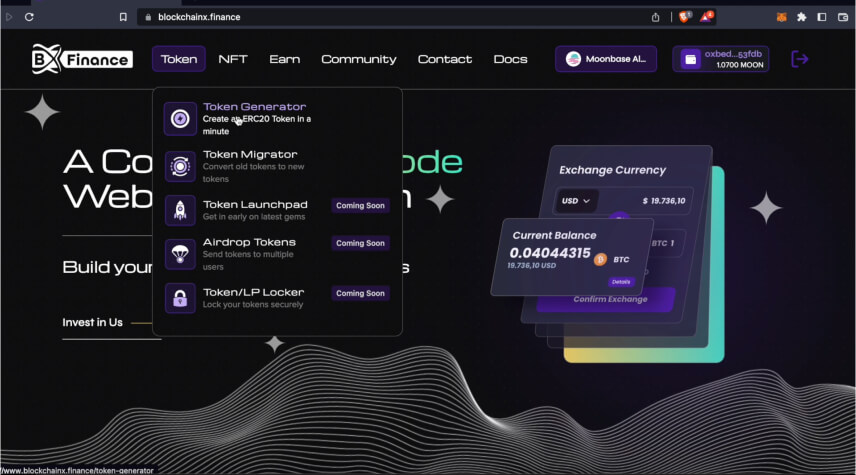
2. Connect to Metamask
Ensure you have installed Metamask and loaded ETH to cover your gas fees. Connect BX Finance to your wallet.
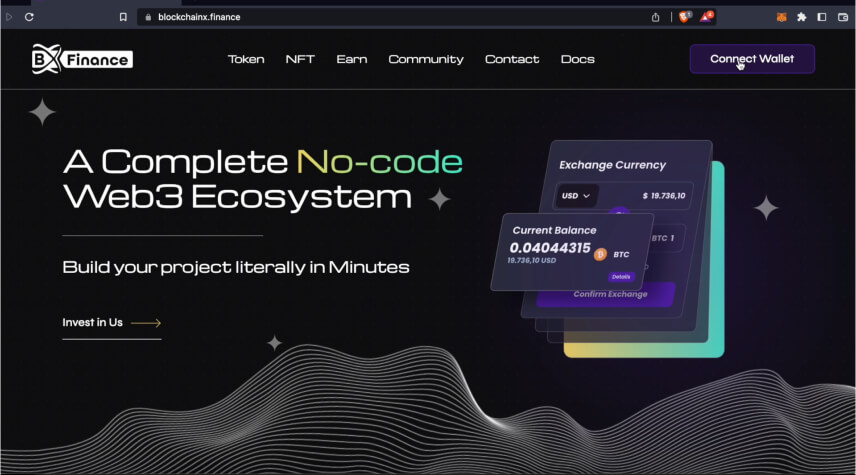
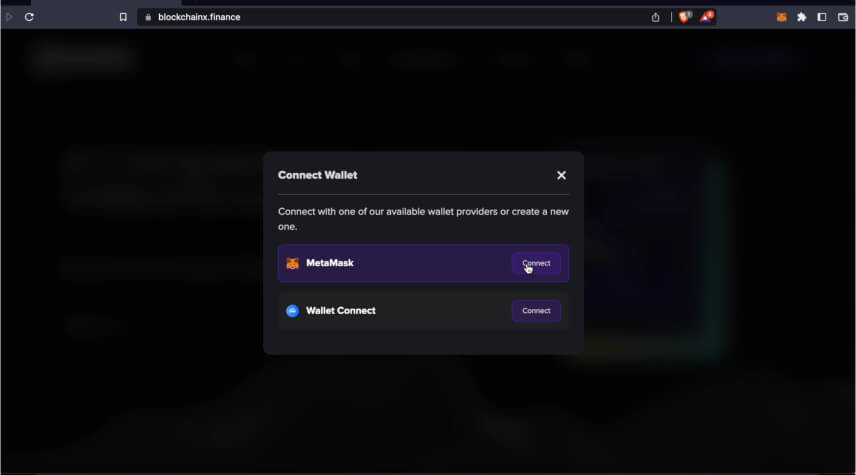
3. Personalize Your Token
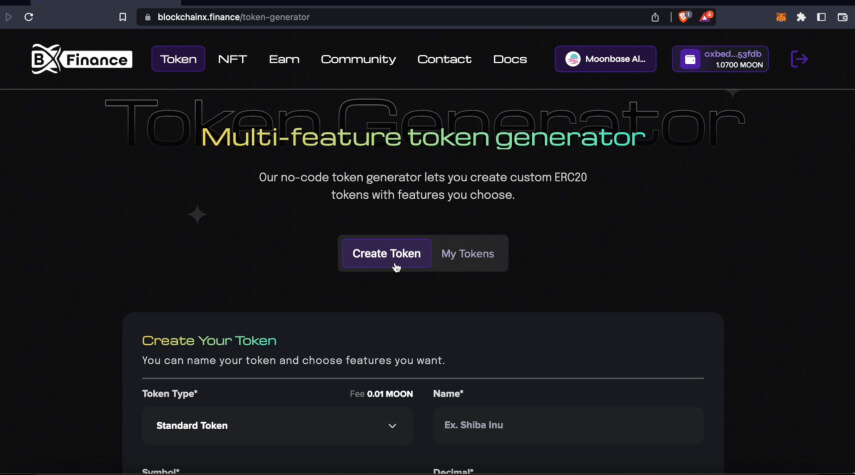
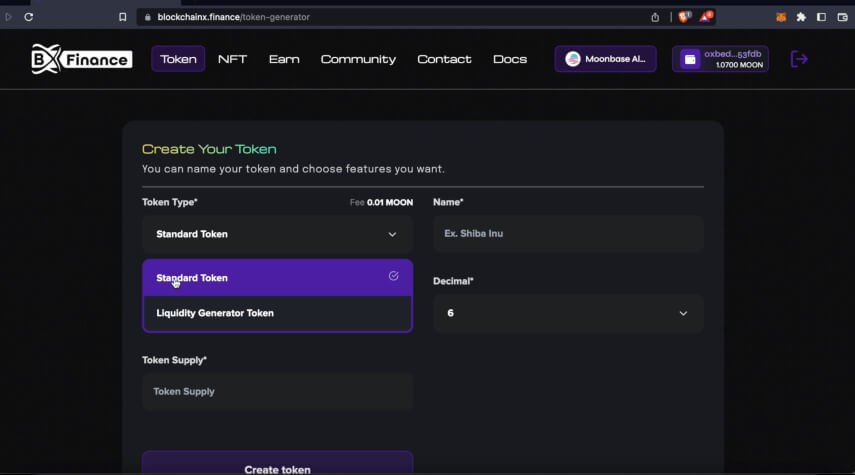
Token name - Type in your token's complete name such as MyToken
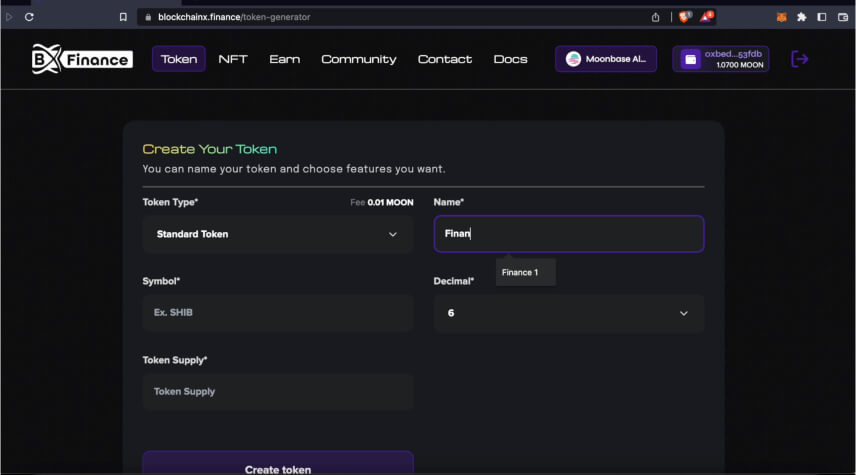
Token symbol - Enter a symbol or abbreviation (e.g., MTK)
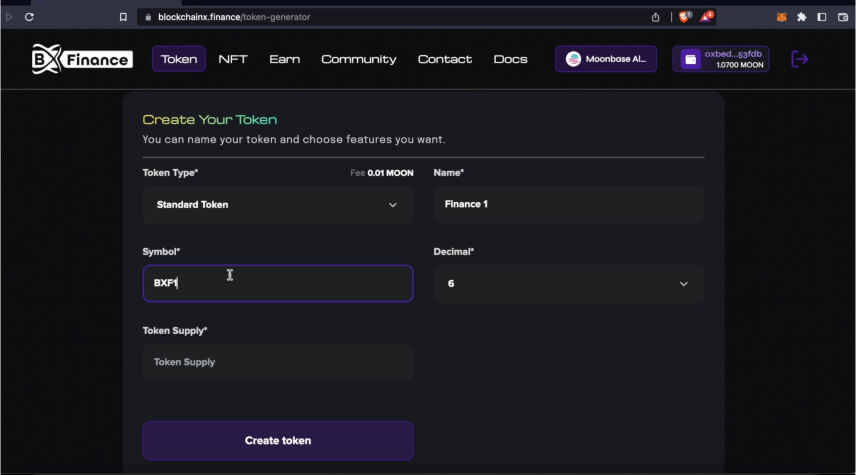
Token supply - Establish the number of tokens that will be produced (e.g., 1,000,000)
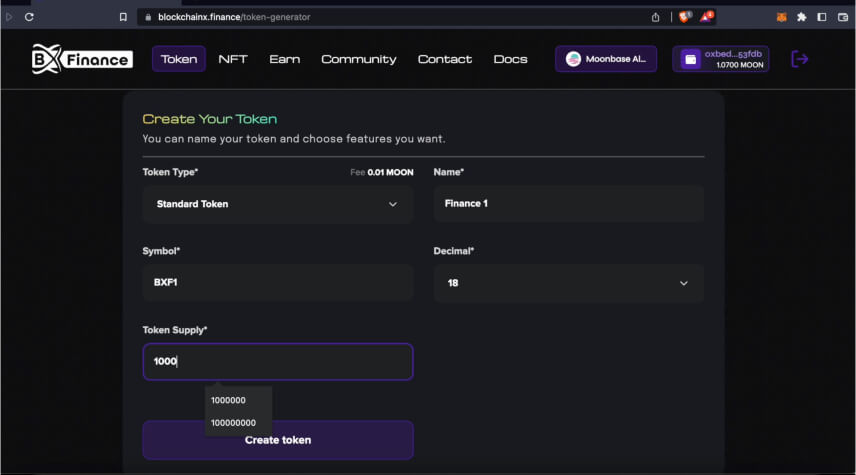
Decimals - Set the decimal places (typically 18 for ERC20 tokens)
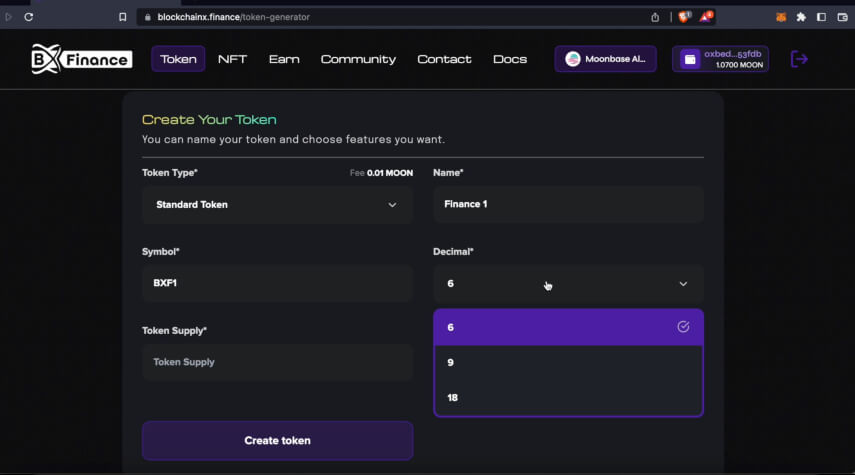
Depending on your demands, you can also find alternatives like mintable which allows you to (create ERC20 tokens in more quantity) and burnable which allows you to (destroy the tokens).
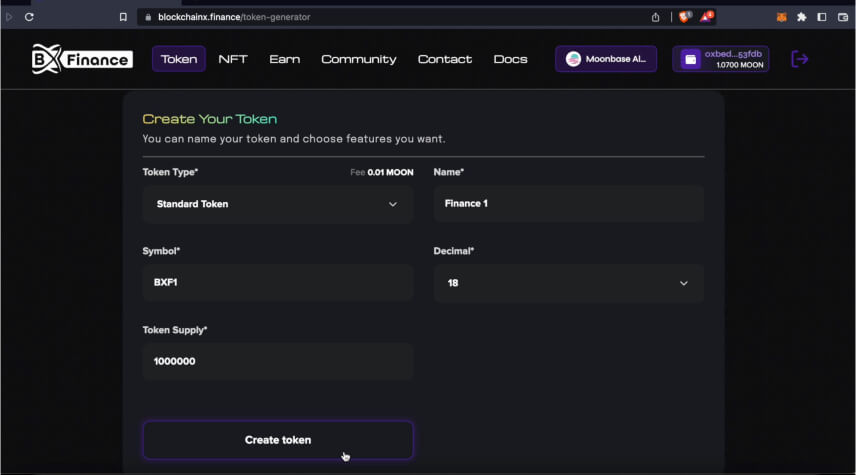
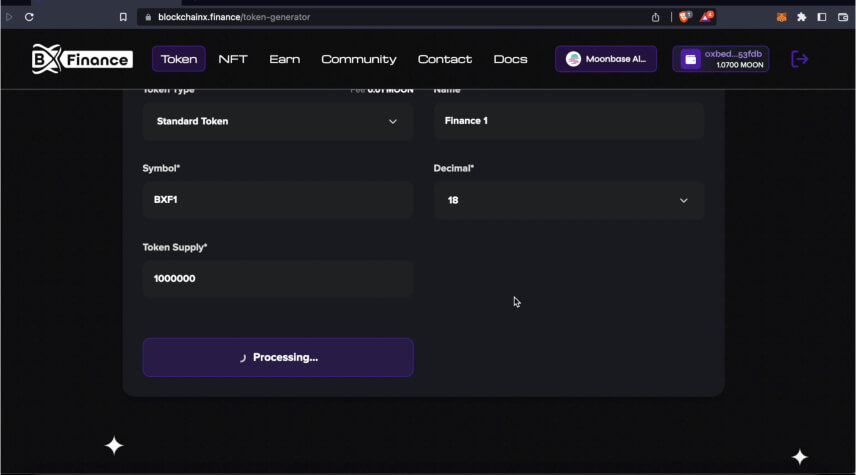
4. Deploy the Token
The platform will ask you to use Metamask to pay the gas fees after you have configured the token settings. Once Metamask verifies the transaction, it releases the token onto the Ethereum network.
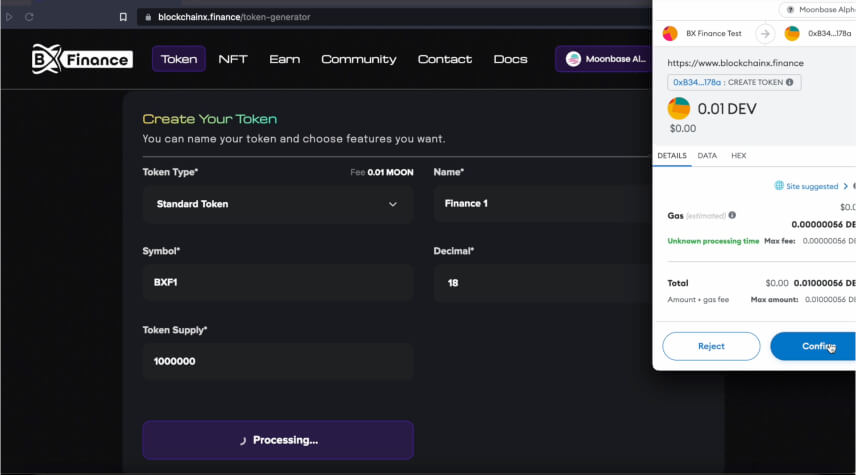
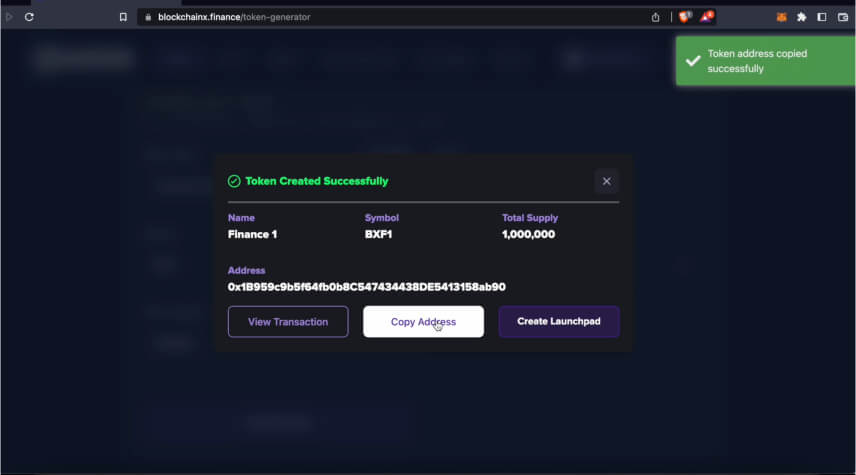
5. Verify the Token
Once Etherscan is launched, you can use the contract address that BX Finance will provide to verify your token.
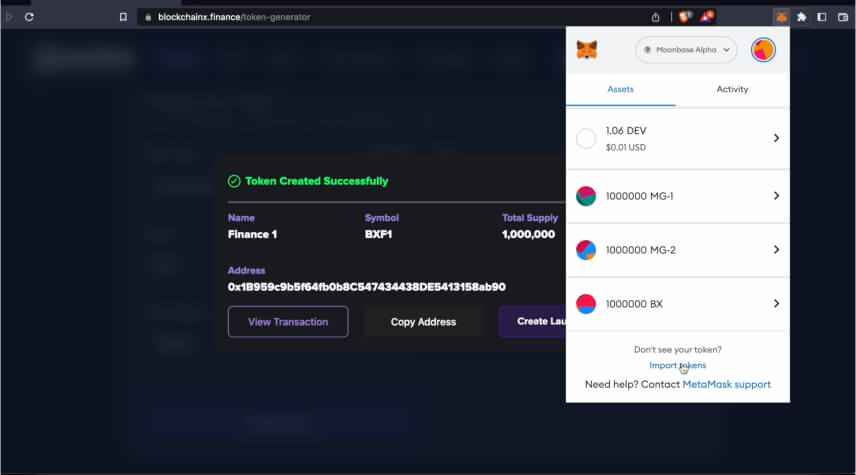
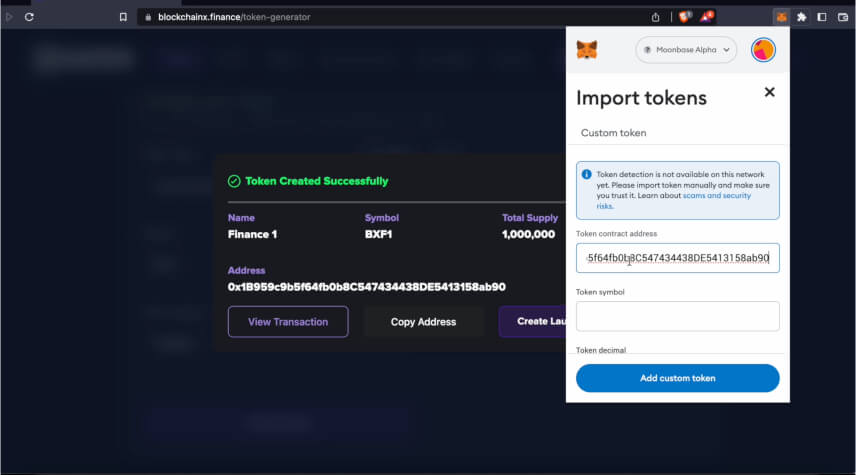
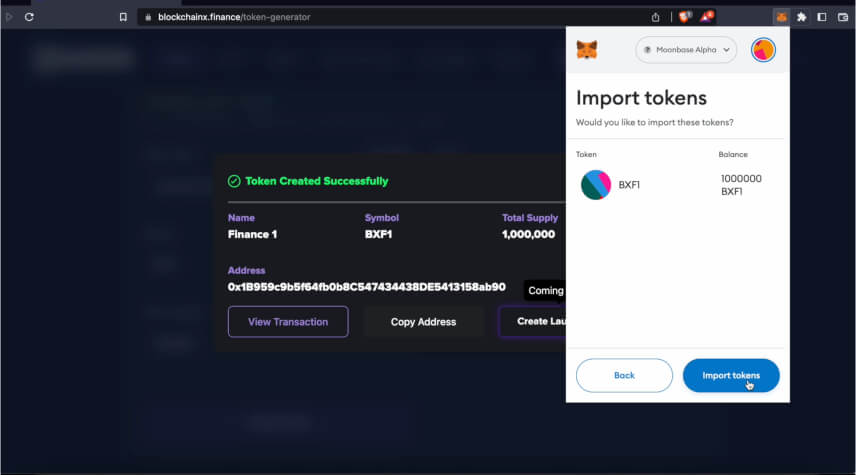
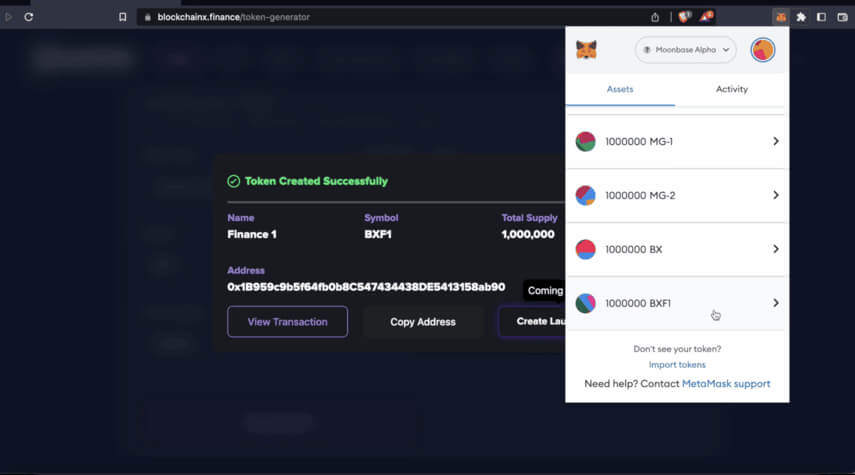
Using Pinksale
Pinksale is another no-code platform that enables the creation of ERC20 tokens as well as additional tools for launching and marketing tokens through presales.
A Step by Step Guide for Pinksale
1. Go to Pinksale
Visit Pinksale’s website
2. Connect Metamask
To pay for gas fees, you will need to connect your metamask wallet which is loaded with ETH, just like with BX Finance.
3. Create a Token
Go to ‘create token’ and choose the Ethereum blockchain’s ERC20 token.
Token name - Type the full name of your token.
Token symbol - Select an abbreviation (e.g., MTK)
Token supply - Choose the quantity of tokens you wish to create
Decimals - Typically the standard is 18
4. Additional Features
On Pinksale, you have the option to select additional features
The features include Anti-whale, Burnable, Deflationary and Mintable (optional)
If launching your token with a fundraising campaign is your plan, you can also set up presale options directly.
5. Deploy the Token
When your token is configured, Pinksale will generate a transaction to achieve the smart contract.
Verify and use Metamask to pay for gas fees.
At that point, your token will be live on the Ethereum blockchain.
6. Launch the Presale for Your Token (Optional)
Pinksale’s presale platform lets you list your token presale without using a third-party service, which is one of its distinctive features.
Why Create an ERC20 Token? Benefits for Advanced Businesses
There are several strategic benefits when you create an ERC20 token for your business that may facilitate efficiency, innovation and growth. Here are some reasons to consider this option:
Fundraising Opportunities
ERC20 tokens enable companies to raise funds through token sales or initial coin offerings. Using this method’s decentralized and flexible fundraising technique, you can raise funds from investors all over the world without relying on conventional financial institutions.
Liquidity
As soon as you list your ERC20 tokens on various cryptocurrency exchanges—they become easily transferable. Liquidity to its ability to facilitate speedy transactions and the conversion of assets into money, liquidity is essential for both investors and businesses. Liquid markets attract new players and increase your business’s assets value.
Global Accessibility
Due to blockchain’s decentralized framework, businesses can easily supply goods and services across international borders.
Smart Contract Automation
Ethereum’s smart contract technology supports ERC20 tokens. This implies that you may automate crucial corporate procedures like voting, income-sharing, payments and governance. These automated tasks ensure transparent and consistent adherence to regulations thereby reducing the risk of human error.
Accountability and Safety
ERC20 tokens which are based on a safe Ethereum blockchain, guarantee transparent and unchangeable transactions increasing confidence and making audits easier.
Consumer Engagement and Loyalty
By using ERC20 tokens as incentives or in loyalty schemes, businesses can increase long-term consumer engagement and participation.
Conclusion
We have covered all the essential elements of creating an ERC20 token in this article from understanding its structure to deploying and managing it. Launching your first Ethereum based token can genuinely transform your strategy regardless of whether you are an investor looking to explore cutting-edge options or an entrepreneur looking to incorporate blockchain into your company.
We at BlockchainX are experts in creating ERC20 tokens and we can provide you with an effortless route to success. With our help—you can avoid technological difficulties and focus on expanding your business.
We at BlockchainX are experts in creating ERC20 tokens and we can provide you with an effortless route to success. With our help—you can avoid technological difficulties and focus on expanding your business.
Contact BlockchainX to start your blockchain journey and co-create your future.